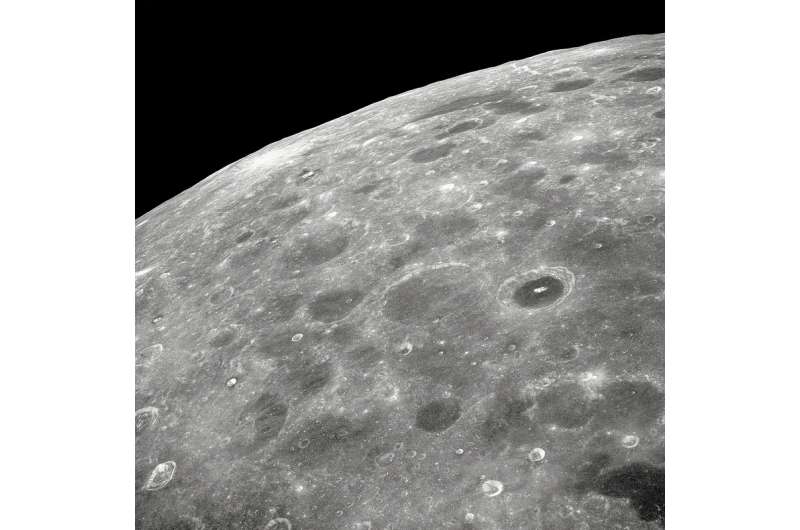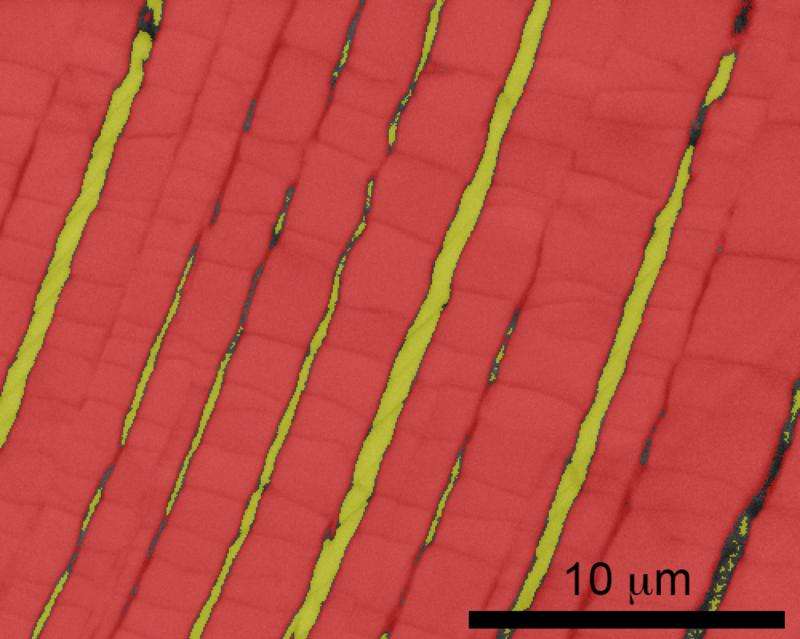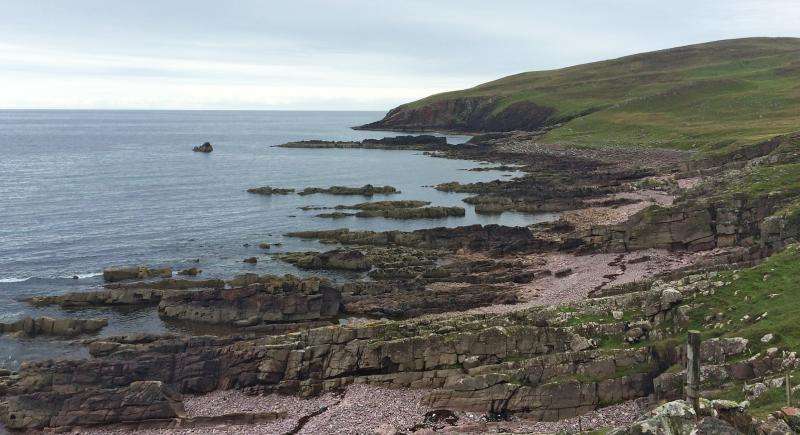Ancient minerals on Earth can help explain the early solar system

A new discovery of an extremely rare mineral, called reidite, from a layer of rock in the North West Highlands of Scotland may seem utterly insignificant on first glance. But this occurrence of reidite has major implications for understanding the early evolution of our solar system.
To comprehend the significance of these small specs of reidite, we must first consider the moon.
The most obvious features on the moon's surface are the circular craters formed by countless meteorite impacts. The dating of lunar samples collected during the Apollo missions tells us that many of these impacts formed around 3.9 billion years ago, which was relatively early in the evolution of our 4.6 billion year old solar system.
This intense period of meteorite impact events, often referred to as the Late Heavy Bombardment hypothesis, has attracted much interest over the past 40 years. But there is a growing body of alternative models that could account for the many impact craters on the moon and hence Earth, and these require a different evolutionary hypothesis for the early solar system.
Crater impressions on Earth
Compared to the moon, the Earth appears to record relatively few impact events. Yet because of its size, Earth should have experienced about 20 times more impacts than the moon.
This apparent discrepancy can be explained by the dynamic nature of the Earth's crust. Tectonic plates on Earth are in continuous motion and over time, which leads to the destruction, erosion and/or burial of impact craters. There are almost no intact rocks remaining that would have been around to witness the Late Heavy Bombardment.
Fortunately, zircon – a mineral that is found in small amounts in many of Earth's rocks – gives us the chance to interrogate the early impact history. Zircon contains trace amounts of uranium, whose radioactive decay to lead can be used for precise dating of geological events.

Zircon is very resilient to almost all physical and chemical processes. Incredibly old grains, up to 4.4 billion years old, have been found as eroded detritus now preserved in younger sedimentary rocks. These ancient zircons have proven to be an invaluable repository of the geological conditions and processes that operated on Earth shortly after its formation, and may potentially preserve the ancient impact history of the Late Heavy Bombardment.
The question is, how do we recognise zircon grains that have been impacted by a meteorite?
In the past decade a number of studies have shown that zircon can contain microscopic features, called microstructures, that indicate that the grain has been stressed and deformed as a result. Unfortunately, these microstructures are not diagnostic of impacts in many cases, and may have formed by plate tectonic processes.
But reidite, which has the same chemical composition as zircon, only forms from zircon at the extremely high-pressure shock conditions imposed by an impacting meteorite; pressures equal to those found around 900km below Earth's surface.
The reidite discovered in Scotland was found as microscopic layers only 2μm wide (about 1/40th the thickness of the average human hair) within grains of zircon. Yet even at these microscopic levels its presence represents the smoking gun of a meteorite impact.
Until a year ago, the three known occurrences of reidite were all associated with impacts that were less than 35 million years ago, which is very young, geologically speaking. It seemed likely that ancient reidite reverted back to zircon.

New finds of ancient times
In 2015 two new discoveries have extended the known occurrence of reidite. The first was dated to around 450 million years ago and the second, the Scottish example, at around 1.2 billion years. These discoveries were made at Curtin University in Perth, and identified the reidite using electron backscatter diffraction, a high resolution scanning electron microscopy technique.
Despite the minute size of the Scottish reidite, the discovery is extremely important. It shows that reidite is stable over long periods of geological time and does not necessarily revert back to zircon. This opens up the potential of using reidite to clearly identify ancient impact events recorded in shocked zircon grains that may be preserved in the detritus of sedimentary rocks formed long after the time of impact.
Establishing the early Earth impact record is challenging. Four billion year old reidite remains elusive, and the ability to constrain the absolute timing of impact events in reidite-bearing zircon grains has yet to be proven.
We are currently looking for evidence of older reidite and are exploring how deformation associated with reidite formation may modify the distribution of elements over incredibly small distances within host zircon.
These micro- and nanoscale observations on Earth's ancient zircon grains may yield the information that will allow us to test the competing models of the early Earth's impact record and say something useful about the early evolution of the solar system.
Source: The Conversation
This story is published courtesy of The Conversation (under Creative Commons-Attribution/No derivatives).
![]()





















